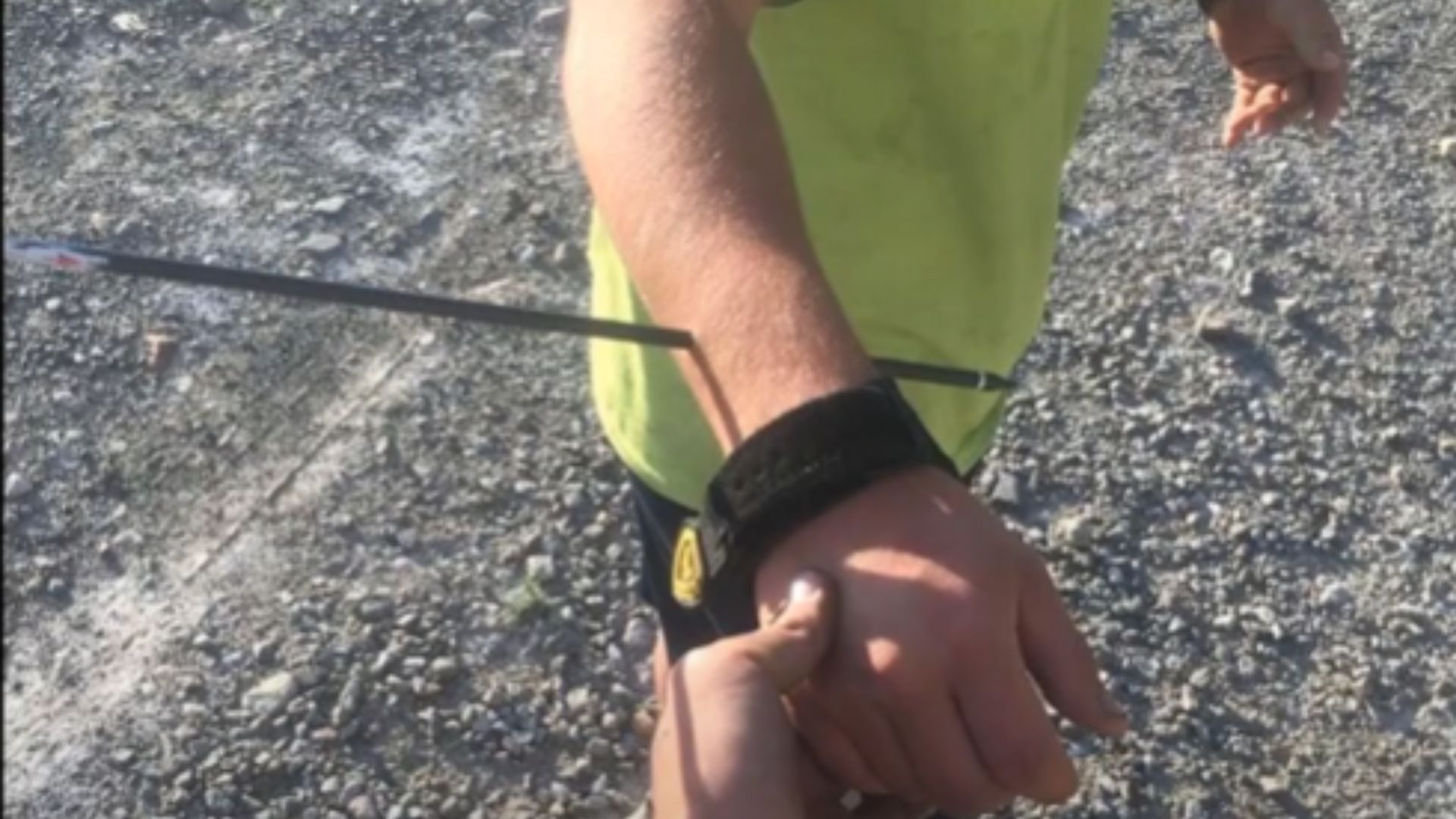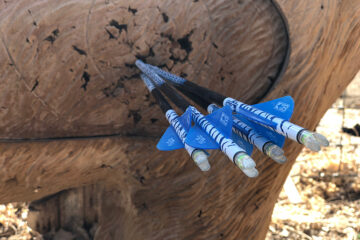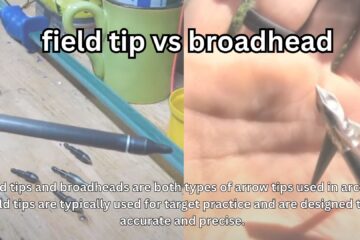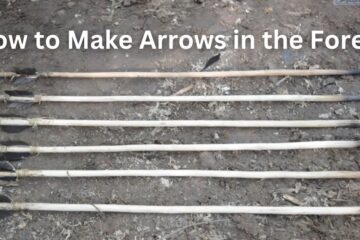Carbon fiber arrow injuries can cause severe harm and should be treated as a medical emergency. These injuries can result in deep puncture wounds, tissue damage, and the potential for infection.
Additionally, fragments of carbon fiber can break off and become embedded in the body, further complicating the injury. Seek immediate medical attention if you or someone else experiences a carbon fiber arrow injury to prevent further damage and ensure proper treatment.
The Potential For Injury With Carbon Fiber Arrows
While carbon fiber arrows offer numerous advantages, they also come with a heightened potential for injury due to their unique characteristics:
- Penetration: Carbon fiber arrows can penetrate deep into their target, increasing the risk of injury if proper safety precautions are not followed.
- Splintering: In rare cases, carbon fiber arrows may splinter upon impact, leading to fragments that could cause harm to the shooter or those nearby.
- Extreme velocity: The lightweight nature of carbon fiber arrows allows them to achieve higher velocities than traditional arrows. This heightened speed can amplify the force upon impact, potentially causing more severe injuries.
Understanding the mechanics of carbon fiber arrows is crucial for both archers and those who are curious about the sport. By grasping the composition, differences, and potential risks associated with these arrows, one can fully appreciate their capabilities while ensuring safety remains a top priority.
So whether you’re an archery enthusiast or simply curious about the world of carbon fiber arrows, now you have a deeper understanding of what makes them so extraordinary.
Unveiling The Dangers Of Carbon Fiber Arrow Injury
Discover the hidden dangers of carbon fiber arrow injuries and how they can cause serious harm. Stay informed to protect yourself from potential harm caused by these powerful projectiles.
Carbon fiber arrows are a popular choice among archery enthusiasts for their lightweight and durable construction. However, it’s essential to be aware of the potential dangers associated with carbon fiber arrow injuries. In this section, we will delve into the hazards that come with these powerful projectiles, focusing on penetration and damage, piercing through protective gear, and the risk of internal injuries.

Penetration And Damage: The Force Of Impact On Human Tissue
- Carbon fiber arrows possess immense force upon impact due to their high velocity and kinetic energy.
- The pointed tip and rigid structure of these arrows allow them to penetrate deep into human tissue, causing significant damage.
- The potential wounds inflicted by carbon fiber arrows can range from superficial cuts to more severe injuries, such as punctured organs or broken bones.
- The force of impact can lead to a wide range of tissue damage, including lacerations, contusions, and even the potential for internal hemorrhaging.
Piercing Through Protective Gear: The Limitations Of Armor
- While protective gear is crucial for minimizing injuries, carbon fiber arrows can still pose a threat even when wearing such equipment.
- Traditional armor, such as chest and back protectors, may not be able to withstand the force and penetration capabilities of carbon fiber arrows.
- The rigid nature of these arrows can pierce through certain types of protective gear, leaving vital organs vulnerable to damage.
- It is essential to select armor designed specifically for archery that can effectively mitigate the risk of carbon fiber arrow injuries.
Internal Injuries: Understanding The Hidden Danger
- One of the most alarming aspects of carbon fiber arrow injuries is the potential for internal harm, which may not be immediately apparent.
- Even when the arrow does not penetrate deeply, the force of impact can lead to internal injuries such as bruising, hemorrhaging, or fractures.
- These internal injuries can be difficult to detect without proper medical examination, making it crucial to err on the side of caution and seek immediate medical attention after any carbon fiber arrow injury.
- Understanding the hidden dangers associated with internal injuries is essential for both archers and medical professionals in diagnosing and treating these cases effectively.
Carbon fiber arrows possess significant dangers when it comes to causing injuries. The force of impact, ability to pierce through protective gear, and the risk of internal harm make it imperative to approach archery with caution and prioritize safety. By being aware of these hazards and taking proper precautions, archers can enjoy the sport while minimizing the risk of carbon fiber arrow injuries.
The Consequences Of Carbon Fiber Arrow Injury
Carbon fiber arrow injuries can have severe consequences, causing deep wounds and significant internal damage. These injuries require immediate medical attention and can result in long-term consequences for the victim’s physical and mental well-being.
Arrow injuries can have serious consequences, ranging from minor wounds to life-threatening situations. In this section, we will explore the severity of injuries caused by carbon fiber arrows and delve into the long-term implications and psychological trauma that individuals may experience as a result.
The Severity Of Injuries: From Minor To Life-Threatening
- Puncture wounds: Carbon fiber arrows are designed to penetrate targets with precision, resulting in puncture wounds of varying degrees. These wounds may appear minor on the surface, but the internal impact can be substantial.
- Damage to vital organs: Depending on the location of the injury, vital organs such as the heart, lungs, or major arteries can be directly affected. This can lead to severe bleeding and life-threatening situations that require immediate medical attention.
- Fractured bones: The force generated by a carbon fiber arrow can be strong enough to fracture bones upon impact. These fractures can range from hairline cracks to compound breaks, requiring extensive medical intervention and prolonged recovery periods.
- Nerve damage: Arrows cutting through nerves can cause long-lasting damage, resulting in loss of sensation or motor function in the affected area. Nerve regeneration is often slow and unpredictable, leading to prolonged rehabilitation or permanent disability.
Long-Term Implications: Chronic Pain And Disability
- Chronic pain: Arrow injuries, even those initially deemed as minor, can result in long-lasting pain that can be debilitating in some cases. The body may struggle to heal completely, leaving individuals with chronic pain that can impact daily life and limit functionality.
- Disability: Severe injuries caused by carbon fiber arrows can result in permanent disability. This may include loss of limb functionality, reduced range of motion, or the need for assistive devices to regain mobility. Adjusting to a new lifestyle and coping with the limitations can be emotionally challenging for the affected individuals.
Psychological Trauma: The Emotional Toll Of Arrow Injuries
- Shock and distress: Experiencing an arrow injury can be a traumatic event, causing individuals to feel shocked, distressed, and overwhelmed by the sudden violence inflicted upon them. The intensity of the experience can have a profound impact on their mental well-being.
- Post-traumatic stress disorder (PTSD): Some individuals may develop PTSD following an arrow injury, experiencing flashbacks, nightmares, and feelings of anxiety or fear. The emotional scars can be long-lasting and require professional therapy and support to overcome.
- Fear and anxiety: Arrow injuries can instill a sense of fear and anxiety in individuals, making it difficult for them to regain confidence and trust in similar situations. These emotional repercussions can affect their daily lives, including their ability to participate in activities they once enjoyed.
Arrow injuries involving carbon fiber arrows should never be underestimated as they can lead to a range of consequences, from physical pain and disability to psychological trauma. Understanding the severity of these injuries and the long-term implications can help individuals take precautions, seek timely medical attention, and provide support for their recovery.
Prevention And Safety Measures
Prevent carbon fiber arrow injuries with these safety measures – proper handling and storage, using protective gear, and adhering to recommended shooting techniques. Stay safe and enjoy your archery experience!
Proper Technique And Training: Minimizing The Risk Of Accidents
- Begin with a proper stance: Maintain a balanced and stable position with feet shoulder-width apart.
- Consistent draw length: Develop muscle memory and accuracy by always drawing the arrow to the same length.
- Focus on form and posture: Keep your back straight, shoulders relaxed, and your elbow in line with the arrow.
- Follow-through: Maintain the bow position after releasing the arrow to ensure proper follow-through and accuracy.
- Seek guidance from a qualified instructor or join an archery club to receive professional training.
Choosing The Right Equipment: Optimal Arrow Selection
- Arrow spine: Select arrows with the appropriate spine stiffness to match your draw weight and bow type.
- Proper arrow length: Ensure that the arrow extends past the bow when drawn, without impeding on your bow’s performance.
- Arrow weight: Use arrows with a weight suitable for your skill level and shooting goals.
- Quality control: Regularly inspect your arrows for cracks, splinters, or other signs of damage. Replace any compromised arrows immediately.
- Consider the conditions: Adjust your arrow selection according to factors such as weather, target type, and shooting distance.
Protecting Vulnerable Areas: Targeting The Right Protective Gear
- Arm guard: Wear an arm guard to shield your forearm from the bowstring during release.
- Finger tab or glove: Provide protection for your fingers when drawing and releasing the bowstring.
- Protective eyewear: Use safety glasses to safeguard your eyes from potential debris or accidental contact.
- Proper clothing: Wear appropriate clothing that doesn’t restrict movement and minimizes the risk of snagging or interfering with your shots.
- Headgear: Consider using a helmet or hat to protect your head and face during archery sessions.
Remember, safety should always be the top priority when engaging in archery activities. By practicing proper technique, selecting the right equipment, and using suitable protective gear, you can enjoy the thrill of carbon fiber arrows while ensuring a safe and enjoyable archery experience.
Stay vigilant, be aware of your surroundings, and always prioritize safety above all else. Happy archery!
Legal And Ethical Considerations
Legal and ethical considerations surrounding carbon fiber arrow injuries are crucial when assessing liability and potential damages. It is imperative to understand the responsibilities of both the manufacturer and user in ensuring safety measures are in place to prevent accidents and mitigate harm.
Legal Implications: Liability And Responsibility In Accidents
Archery injuries, although rare, can occur during training or competition. When such incidents happen, it is important to establish liability and responsibility. Here are the key legal considerations:
- Training and supervision: Proper training and supervision are essential in minimizing the risk of accidents. Coaches and instructors should ensure that individuals follow safety protocols to safeguard against injuries.
- Equipment maintenance: Maintaining archery equipment, including carbon fiber arrows, is crucial in preventing accidents. Regular inspection and replacement of damaged equipment are necessary to ensure safety.
- Negligence and assumption of risk: Participants in archery activities are expected to take reasonable precautions to avoid harm. However, negligence on the part of the organizers or facility owners can be grounds for legal action.
- Waivers and consent: Signed waivers and informed consent forms play a crucial role in mitigating liability. These documents clearly outline the potential risks involved in archery and absolve organizers of liability to a certain extent.
Ethical Concerns: Ensuring A Safe And Fair Archery Environment
In addition to the legal considerations, ethical concerns play a significant role in fostering a safe and fair archery environment. Here are some ethical aspects to consider:
- Sportsmanship and fairness: Encouraging fair play and good sportsmanship is the cornerstone of ethical archery. Athletes should compete with integrity, respecting the rules and regulations of the sport.
- Inclusivity and diversity: Creating an inclusive environment that welcomes individuals of all backgrounds and abilities is essential in the archery community. Discrimination based on race, gender, or any other characteristic should never be tolerated.
- Emphasizing safety: Prioritizing safety should always be a top ethical concern. Archery clubs and organizations should regularly review and improve their safety measures to protect participants and minimize the risk of injuries.
Education And Awareness: Promoting Safety Within The Archery Community
To ensure a safer archery environment, education and awareness play a pivotal role. Here are some ways to promote safety within the archery community:
- Training programs: Continued education and training programs should be provided to participants. These programs should focus on proper archery techniques, safety practices, and injury prevention measures.
- Safety guidelines: Publishing comprehensive safety guidelines can serve as a valuable resource for archers. These guidelines should cover topics such as equipment maintenance, shooting range safety, and emergency procedures.
- Community outreach: Engaging in community outreach initiatives can help raise awareness about archery safety. Collaborating with schools, local organizations, and youth clubs can promote safe archery practices among a wider audience.
By addressing the legal and ethical considerations surrounding carbon fiber arrow injuries, we can foster a safer and more responsible archery community. Together, we can ensure that this thrilling sport remains enjoyable and accessible for archers of all levels.
Case Studies: Real-Life Carbon Fiber Arrow Injuries
Explore real-life case studies highlighting the dangers of carbon fiber arrow injuries. Gain insight into the impact and severity of these incidents, and learn how to prevent such accidents.
Carbon Fiber Arrow Injury: Examining documented incidents: Learning from past accidents
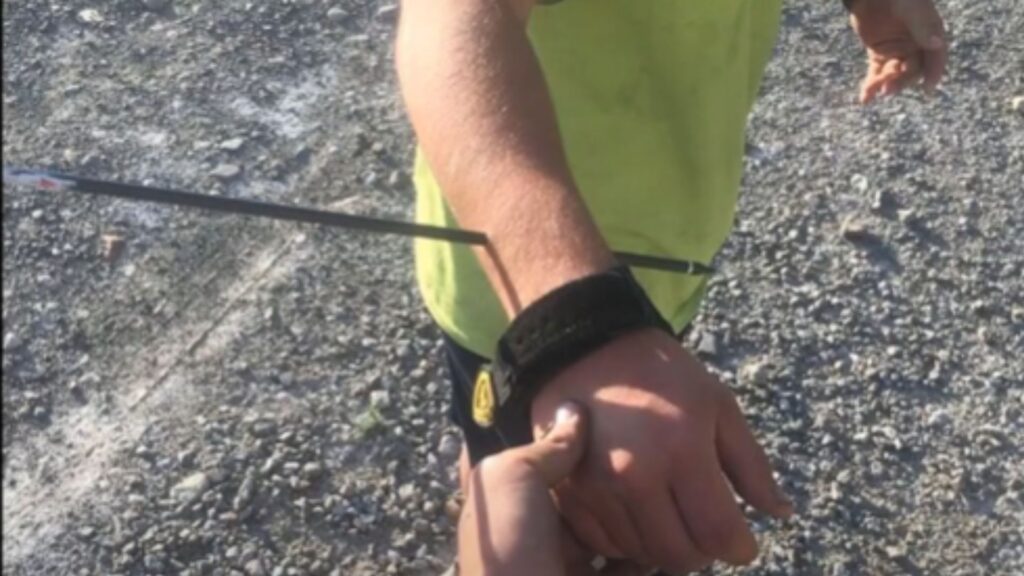
Reporting And Data Collection: Identifying Trends And Patterns
- Accurate reporting and data collection are crucial in understanding the frequency and nature of carbon fiber arrow injuries.
- Regularly analyzing injury reports helps in identifying common scenarios and spotting emerging patterns.
- Tracking injury data enables archery organizations to implement targeted safety measures and equipment improvements.
- Establishing a centralized reporting system ensures a comprehensive analysis of incidents across various locations.
Examining Documented Incidents: Learning From Past Accidents
- Case 1: Misaligned arrow nock –
- Scenario: The arrow nock was incorrectly aligned, causing it to disconnect prematurely upon release.
- Injury: The athlete suffered a hand laceration when an arrow fragment struck their palm.
- Lessons learned: Proper arrow nock alignment is crucial to avoid equipment failure and potential injuries. Athletes should receive thorough training on arrow assembly and inspection.
- Case 2: Fractured carbon fiber shaft –
- Scenario: A carbon fiber arrow shaft fractured upon impact with a hard surface.
- Injury: The fractured arrow shaft caused deep tissue damage and required medical intervention.
- Lessons learned: Carbon fiber arrows should not be used when shooting against hard targets. Archers should be aware of their surroundings and ensure a safe shooting environment to prevent potentially dangerous ricochets.
- Case 3: Failure of arrow spine consistency –
- Scenario: An arrow with inconsistent spine stiffness properties experienced erratic flight, deviating from the intended trajectory.
- Injury: The arrow veered off course and struck a nearby spectator, causing a minor head injury.
- Lessons learned: Consistency in arrow spine stiffness is crucial for accurate and predictable arrow flight. Careful quality control measures should be in place during arrow manufacturing to avoid deviations that could potentially harm individuals within the vicinity.
By reviewing these real-life cases, we highlight the importance of safety protocols, equipment inspection, and proper training in minimizing carbon fiber arrow injuries. As archery continues to evolve, it is our responsibility to prioritize safety and learn from past accidents to create a safer environment for all enthusiasts.
Frequently Asked Questions Of Carbon Fiber Arrow Injury
Are Carbon Fiber Arrows Safe?
Yes, carbon fiber arrows are safe for use in archery due to their strength and durability.
What Happens When A Carbon Arrow Breaks?
When a carbon arrow breaks, it can shatter or splinter, posing a risk of injury.
What Is The Most Common Injury In Archery?
The most common injury in archery is shoulder strain, caused by repetitive motion and improper technique.
How Do You Treat An Arrow Wound?
To treat an arrow wound: – Call for immediate medical assistance. – Do not remove the arrow; stabilize it instead. – Apply pressure to control bleeding. – Keep the wounded person still and elevate the injured area.
Conclusion
It is crucial to prioritize safety when it comes to using carbon fiber arrows. The potential for serious injury should not be underestimated, as these arrows are designed for high speed and accuracy. Taking the necessary precautions, such as wearing appropriate protective gear and practicing proper technique, can significantly reduce the risk of accidents.
Additionally, regular inspection of arrows for any signs of damage or wear is essential for safe use. As we have discussed, carbon fiber arrow injuries can be severe and may require immediate medical attention. By staying vigilant, informed, and responsible, we can enjoy the benefits of using carbon fiber arrows while minimizing the potential for harm.
So, remember to prioritize your safety and the safety of others when engaging in archery or any other activities involving carbon fiber arrows.

